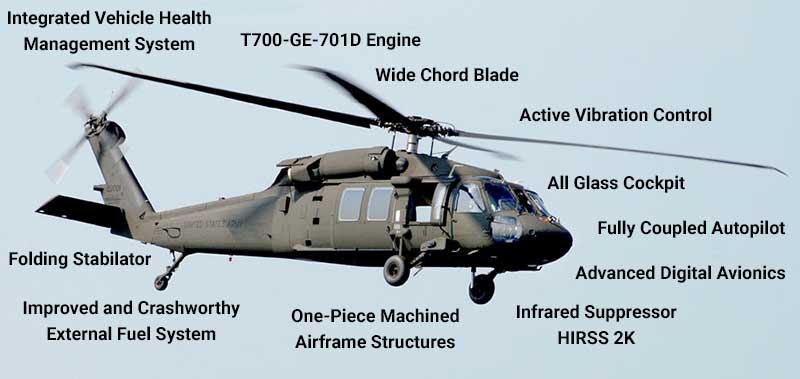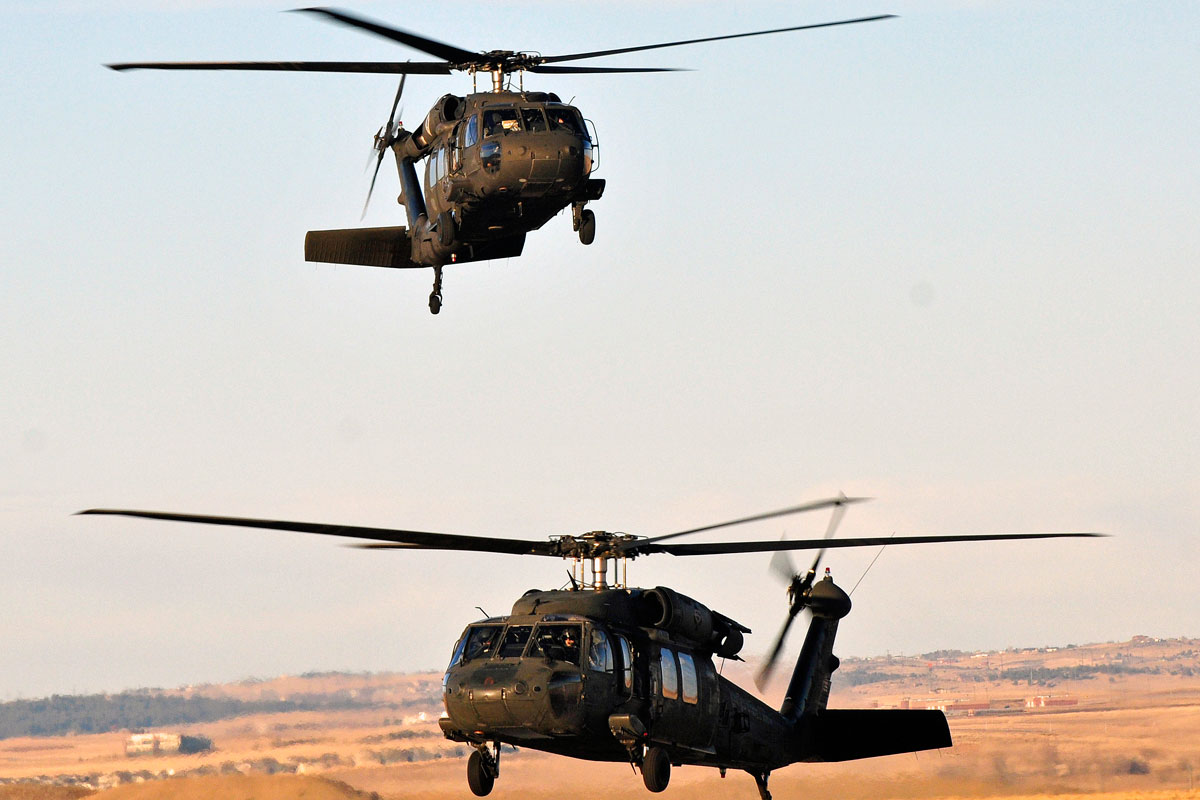Attaining Quality: Secret Techniques for UH 60 Helicopter Maintenance
Attaining Quality: Secret Techniques for UH 60 Helicopter Maintenance
Blog Article
Recognizing the Mechanics and Engineering Behind Uh 60 Helicopters
The UH-60 helicopter, typically recognized as the Black Hawk, stands as a pinnacle of modern-day rotorcraft modern technology, embodying a blend of durable design and detailed technicians. From its creation to its existing versions, the evolution of this aircraft showcases a combination of innovation and practicality. As we peel back the layers of the UH-60's design, a globe of elaborate systems and meticulous engineering emerges. Comprehending the auto mechanics and design behind this versatile aircraft unveils a world where accuracy satisfies power, and where each element plays a crucial function in achieving flight.
Background of UH-60 Helicopters
The background of UH-60 helicopters traces back to the late 1970s when the United States Military sought a flexible and sophisticated energy helicopter to replace its aging fleet. In action to this need, the Sikorsky Aircraft Firm developed the UH-60 Black Hawk helicopter. Presented in 1979, the UH-60 quickly became a staple in armed forces operations because of its excellent capabilities.
The UH-60 was developed to master a selection of missions, consisting of troop transport, clinical discharge, digital warfare, and special procedures. Its capacity to adjust to different roles made it a beneficial asset to the U.S. uh 60. Army and other army pressures around the globe
Over the years, the UH-60 platform has actually gone through numerous upgrades and variants to improve its performance and keep speed with evolving objective needs. These helicopters have seen comprehensive service in disputes such as the Gulf War, Afghanistan, and Iraq, showcasing their dependability and versatility in varied functional settings. The UH-60's rich background is a testament to its enduring tradition as a leading energy helicopter.

Engine and Power Equipments
Making use of sophisticated propulsion innovation, UH-60 helicopters are geared up with advanced engine and power systems to make certain ideal performance and dependability in a range of operational circumstances. The UH-60, typically understood as the Black Hawk, is powered by 2 General Electric T700-GE-701D engines, each efficient in providing up to 1,940 shaft horsepower. These turboshaft engines supply the necessary thrust for the helicopter to accomplish its objectives successfully, including troop transportation, medical evacuation, and combat assistance.

Rotor System and Aerodynamics
Just how do the rotor system and the rules of aerodynamics of UH-60 helicopters add to their functional effectiveness and flight capacities? The blades system of the UH-60 helicopter plays a crucial duty in giving lift and propulsion. The UH-60 includes a four-bladed, totally expressed blades system that enables for high ability to move and security throughout trip. This design makes it possible for the helicopter to perform a variety of missions, from transport and clinical emptying to combat procedures.
The rules of aerodynamics likewise play an essential duty in the efficiency of UH-60 helicopters. The structured body and blades blade layout minimize drag, enabling the helicopter to achieve higher speeds and better fuel efficiency. The aerodynamic layout of the UH-60 likewise adds to its capacity to operate in varied ecological conditions, including high altitudes and hot temperatures.
Avionics and Flight Control Systems

In its detailed coordination with the blades system and the rules of aerodynamics of UH-60 helicopters, the avionics and trip control systems create a crucial network of technologies forming the airplane's operational capabilities. In the UH-60, these systems consist of electronic displays, communication radios, GPS navigating, weather radar, and auto-pilot systems.
The trip control systems of the UH-60 are in charge of equating the pilot's inputs into the appropriate modifications to the rotor system, guaranteeing steady flight and ability to move. These Going Here systems contain hydraulic actuators, servos, and computers that interact to regulate the primary and tail blades, along with other flight control surfaces. By specifically managing the helicopter's flight dynamics, these systems allow pilots to execute a vast array of objectives, from transport find out here and search-and-rescue to battle operations, with accuracy and confidence.
Function and Applications in Aeronautics
The role and applications of avionics and trip control systems in aviation are important to making certain the effective and safe operation of airplane, including UH-60 helicopters. Avionics systems in UH-60 helicopters encompass a variety of digital systems that help in navigating, interaction, surveillance, and managing various airplane functions. These systems include electronic displays, autopilot systems, interaction radios, general practitioner navigating equipment, and weather condition radar. Trip control systems play a crucial role in steering the helicopter in the air, maintaining security, and ensuring accurate motions. The fly-by-wire technology made use of in modern-day UH-60 helicopters converts pilot inputs right into digital signals, which are then analyzed by the trip control computer systems to adjust the aircraft's control surface areas. In addition, these systems integrate safety and security attributes such as auto-pilot settings, surface awareness advising systems, and stability augmentation systems to enhance the general safety and security and operational capacities of the UH-60 helicopters in various goals, including army transport, clinical evacuation, search and rescue, and airborne firefighting.
Verdict
Finally, the UH-60 helicopter is a flexible aircraft with an abundant history and advanced design. Its engine and power systems, blades system, the rules of aerodynamics, avionics, and trip control systems all collaborate to make it a trusted and reliable maker. The UH-60's function and applications in aviation are substantial, varying from army operations to look and rescue goals. Its continued growth and usage demonstrate its importance in the area of aeronautics (uh 60).
In its elaborate coordination with the rotor system and aerodynamics of UH-60 helicopters, the avionics and flight control systems develop a vital network of innovations shaping the aircraft's functional capacities.The flight control systems of the UH-60 are responsible for translating the pilot's inputs right into the ideal adjustments to the blades navigate to this site system, making certain stable trip and ability to move. Avionics systems in UH-60 helicopters incorporate a variety of digital systems that help in navigating, interaction, tracking, and controlling numerous aircraft functions. Furthermore, these systems integrate safety and security features such as auto-pilot modes, terrain awareness cautioning systems, and stability augmentation systems to improve the total safety and security and operational abilities of the UH-60 helicopters in numerous missions, including troop transportation, medical discharge, search and rescue, and airborne firefighting.
Its engine and power systems, blades system, aerodynamics, avionics, and trip control systems all function together to make it a efficient and dependable maker.
Report this page